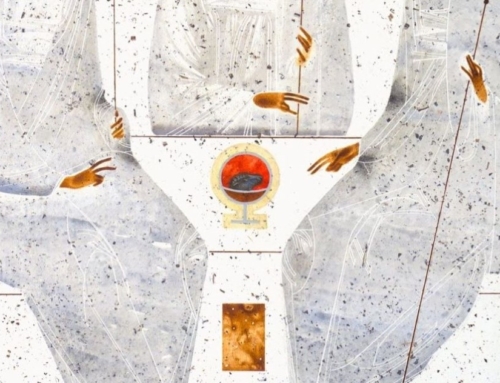The Church of Santa Maria della Vittoria in Rome boasts one of the world’s greatest art treasures, Gian Lorenzo Bernini’s sculpture St. Teresa in Ecstasy. Bernini’s masterpiece depicts a vision St. Teresa of Avila experienced in prayer: an angel came to her holding a flaming arrow with which he repeatedly pierced her heart, resulting in indescribable pain and simultaneously setting her on fire with love for God. Though spectacular, the story is hardly unique. St. Teresa’s life was filled with such visions, and for this reason (among others) she is considered one of the great mystics of the Church. It may come as a surprise, then, to hear that this Doctor of the Church also wrestled with one of the most common obstacles to prayer: distractions.
Anyone who has ever attempted to pray knows the experience. You sit down with the intention of setting aside a few minutes to intercede for loved ones or just to be with God, and immediately that annoying McDonald’s commercial pops into your head. You try to remember where the advertisers got the song, and this sends you back to that awkward junior high dance where you first heard it, and so on. The next thing you know, five minutes are long gone, and you realize you just spent your “meditation” flitting from thought to thought like a butterfly. Though distractions can frustrate us to no end, it may help to realize that they’re actually a common problem. St. Thomas Aquinas says it is nearly impossible to pray the Lord’s Prayer even once without our minds wandering off, and in a recent interview, Pope Francis noted that he loves spending an hour in adoration before the Blessed Sacrament “even when I get distracted and think of other things, or even fall asleep praying.”
In The Way of Perfection, a work she wrote to aid her Carmelite nuns in prayer, St. Teresa expresses compassion for those who (like herself) struggle with distractions: “There are some souls and minds so scattered they are like wild horses no one can stop. Now they’re running here, now there, always restless… I pity these souls greatly, for they seem to be like very thirsty persons who see water in the distance, but when they want to go there, they meet someone who prevents their passing from the beginning through the middle to the end.” How can one hope to conquer such seemingly insurmountable obstacles?
St. Teresa offers sage advice in a passage from The Book of her Life:
So I return to the advice [given earlier in the work] – and even if I repeat it many times this doesn’t matter – that it is very important that no one be distressed or afflicted over dryness or noisy and distracting thoughts. If people wish to gain freedom of spirit and not be always troubled, let them begin by not being frightened by the cross, and they will see how the Lord also helps them carry it and they will gain satisfaction and profit from everything.
St. Teresa identifies dryness (i.e., lack of emotion in prayer) and distractions as a cross to bear. Rather than being an obstacle to growth in our relationship with God, then, distractions can actually be a means to holiness when approached with the proper attitude: “Whoever does not bear his own cross and come after me cannot be my disciple” (Lk 14:27). Moreover, provided we do not willfully let our minds wander (later in the same passage St. Teresa cautions, “we must not become neglectful”), Christ does not leave us on our own: “they will see how the Lord also helps them carry it [i.e., the cross of distractions].” It is precisely in our weakness that the Lord comes to our aid (cf. 2 Cor 12:9), and distractions are one of the surest signs of our weakness.
Knowing human nature, St. Teresa recognizes that people may need to hear this advice more than once. It is easy – and common – to be distraught over our short attention span in prayer. But the sooner we heed the advice of this great Spanish doctor, the more fruitful our prayer will be – whether we’re focused or not.
✠
Photo by Sumselkawumsel, Photo of Bernini’s sculpture “Ecstasy of Saint Teresa” in Santa Maria della Vittoria church in Rome, Italy (CC BY-SA 3.0).







